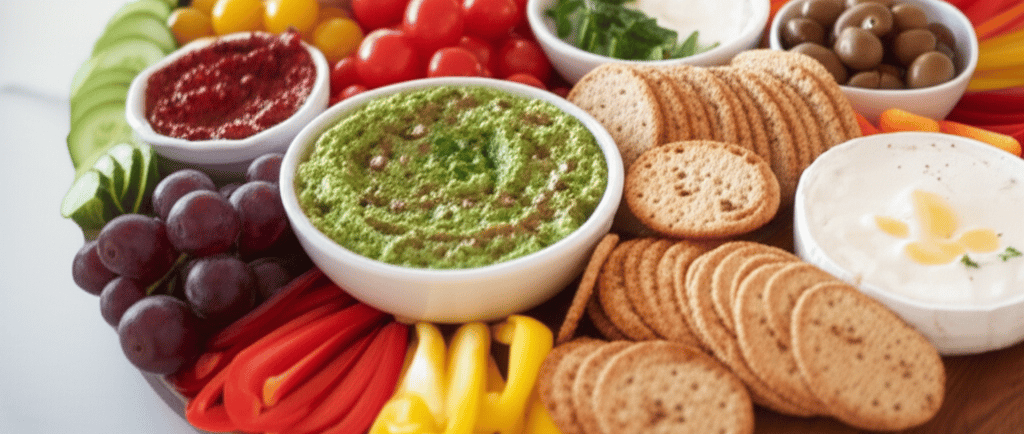Crafting the Perfect Vegetarian Grazing Board
Today, we're diving into the vibrant world of a vegetarian grazing board, proving that plant-based doesn't mean compromising on flavor, texture, or stunning presentation.
CHARCUTERIE BOARD IDEASHEALTHY & SPECIAL DIET BOARDSBOARD BUILDING TUTORIALS
8/6/20252 min read


Welcome back to Grazerie Boards, where we believe every gathering deserves a spread as beautiful as it is delicious! Perfect for a casual brunch, elegant dinner party, or a delightful afternoon snack, a plant-based grazing board is an artful alternative to traditional charcuterie, brimming with fresh produce, savory dips, artisanal cheeses (or their dairy-free counterparts!), and so much more. Get ready to impress your guests and nourish your soul with this comprehensive guide to building an unforgettable vegetarian board. Let's create something spectacular!
Step-by-Step Guide to Building Your Vegetarian Grazing Board
Step 1: Select Your Foundation & Key Vessels
Begin by choosing the perfect board or platter. A large wooden board, slate, or marble slab provides an excellent canvas for your vegetarian grazing board. Next, strategically place small bowls or ramekins. These will hold your delightful dips, olives, nuts, and other loose items, serving as the "anchors" for your board and adding structure. Consider bowls of varying sizes and materials to add visual interest.
Step 2: Anchor with Dips and Spreads
Now, fill your pre-placed bowls with an array of vibrant and flavorful dips and spreads. Think creamy hummus, a bright green guacamole, a rich baba ghanoush, or a tangy labneh. These are essential for any plant-based board and provide a fantastic base of flavor and color. Don't forget a delicious pesto or a spicy red pepper spread to add variety.
Step 3: Introduce Your Cheeses & Plant-Based Proteins
Next, artfully arrange your selection of vegetarian-friendly cheeses. This could include soft bries, crumbly goat cheese, sharp cheddars, or a selection of high-quality vegan cheeses for a fully dairy-free grazing board. Alongside these, add some satisfying plant-based proteins like marinated olives, spiced nuts (almonds, walnuts, pistachios), roasted chickpeas, or even small portions of marinated tofu or tempeh for added heartiness on your vegetarian platter.
Step 4: Layer in Fresh Fruits & Colorful Vegetables
This is where your vegetarian grazing board truly comes alive with color and freshness! Arrange an abundance of seasonal fruits and vegetables. Think juicy grapes, sliced apples and pears, sweet berries, and figs. For vegetables, include crisp cucumber slices, vibrant bell pepper strips, carrot sticks, cherry tomatoes, and crunchy radishes. Vary shapes and colors for maximum visual appeal and offer a range of textures for your crudités board.
Step 5: Add Artisanal Breads & Crackers
No grazing board is complete without an assortment of delicious vehicles for all those wonderful flavors. Fan out an array of artisan crackers, crusty baguette slices, seeded breadsticks, and gluten-free crackers. Arrange them around your dips and cheeses, making them easily accessible for dipping and scooping. Ensure there's enough variety to complement both savory and sweet elements of your grazing board for vegetarians.
Step 6: Fill the Gaps & Garnish with Flair
The final step is to fill in any remaining gaps and add those beautiful finishing touches. Tuck in smaller items like dried fruits (apricots, cranberries), cornichons, small handfuls of edible flowers, and fresh herbs (rosemary sprigs, dill, basil leaves) to elevate the presentation. A drizzle of high-quality olive oil or a sprinkle of flaky sea salt over certain elements can also enhance both flavor and aesthetic of your completed vegetarian grazing board.
